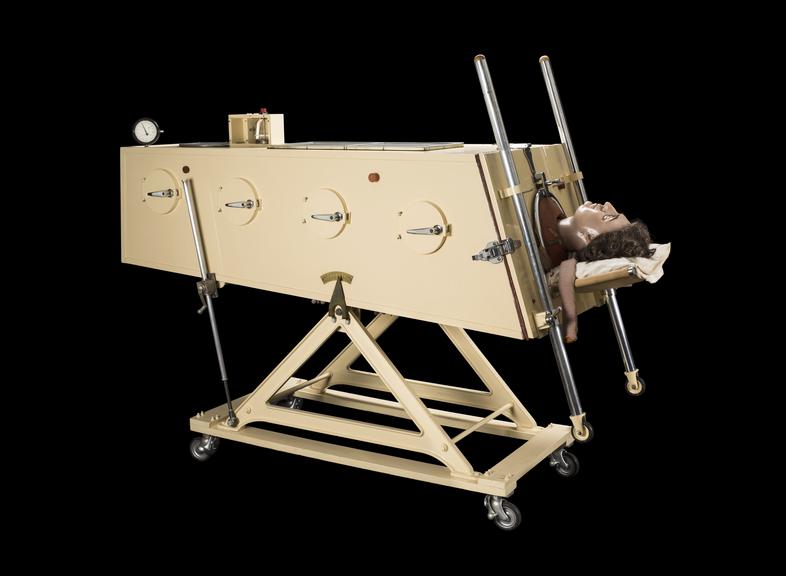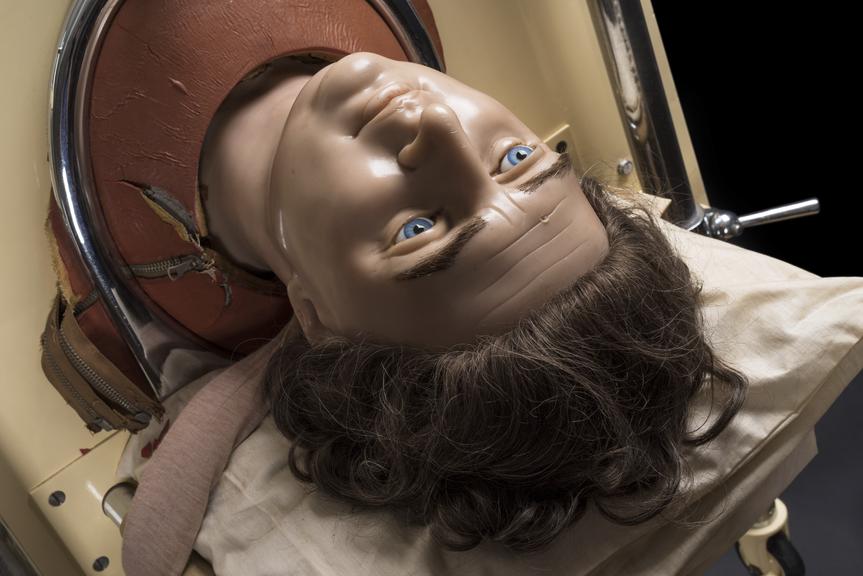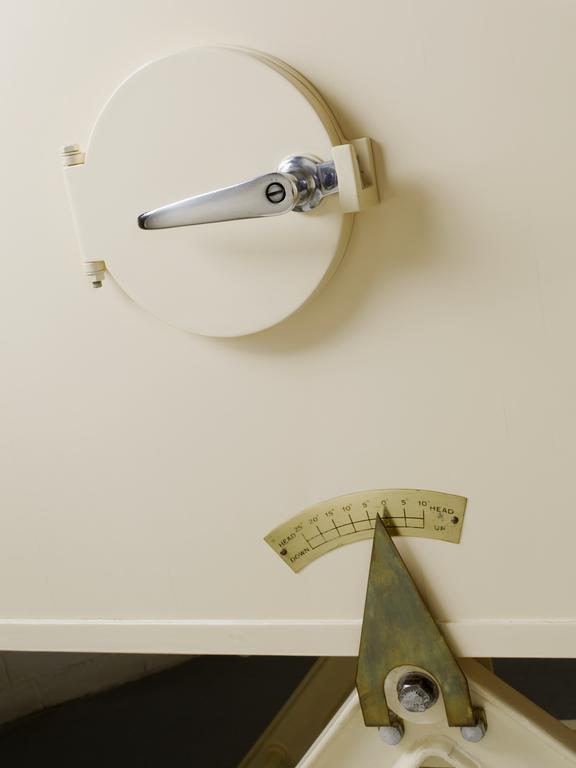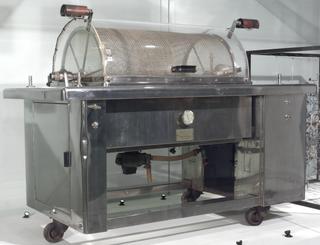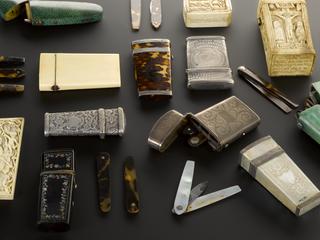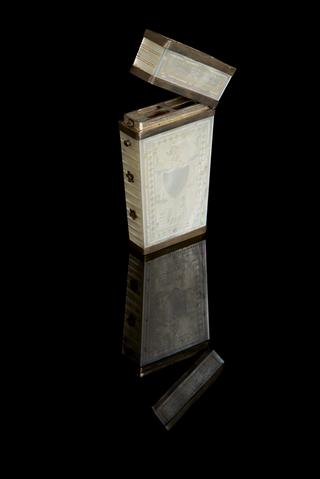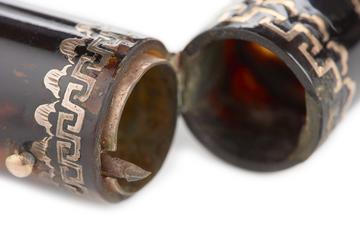Both-type iron lung c.1950 presented by Viscount Nuffield to the Memorial Hospital Darlington (see also part records)
Have you ever run so hard that you’re gasping for air? Been knocked over and ‘winded’? Those few scary seconds when you just can’t catch your breath? Imagine having that sensation all the time. When breathing becomes this difficult, a machine has to do it for you.
With just your head outside the machine, the iron lung forces air in and out of your lungs. Who needed this kind of treatment? Anyone who had weakness or paralysis of their respiratory muscles, of which polio was a major cause in the 1940s and 1950s. The disease could pass almost unnoticed, but at other times the virus attacked nerves controlling the muscles of breathing.
How long would you need to spend inside the iron lung? It could be days, weeks or even years. You might recover to breathe for yourself, or the damage could be permanent. Some patients stayed in iron lungs for the rest of their lives, accompanied by the constant ‘ker-swish’ sound of the machine.
Was it a lifesaver or a terrifying confinement? Death could be avoided, but you might fear being trapped in a ‘coffin’, forced to adapt your breathing, talking and eating to the rhythm of the machine. Iron lungs were used less and less as vaccination reduced the incidence of polio. But we’ll always need machines to help us breathe in some circumstances, think of modern day intensive care and life support.



















